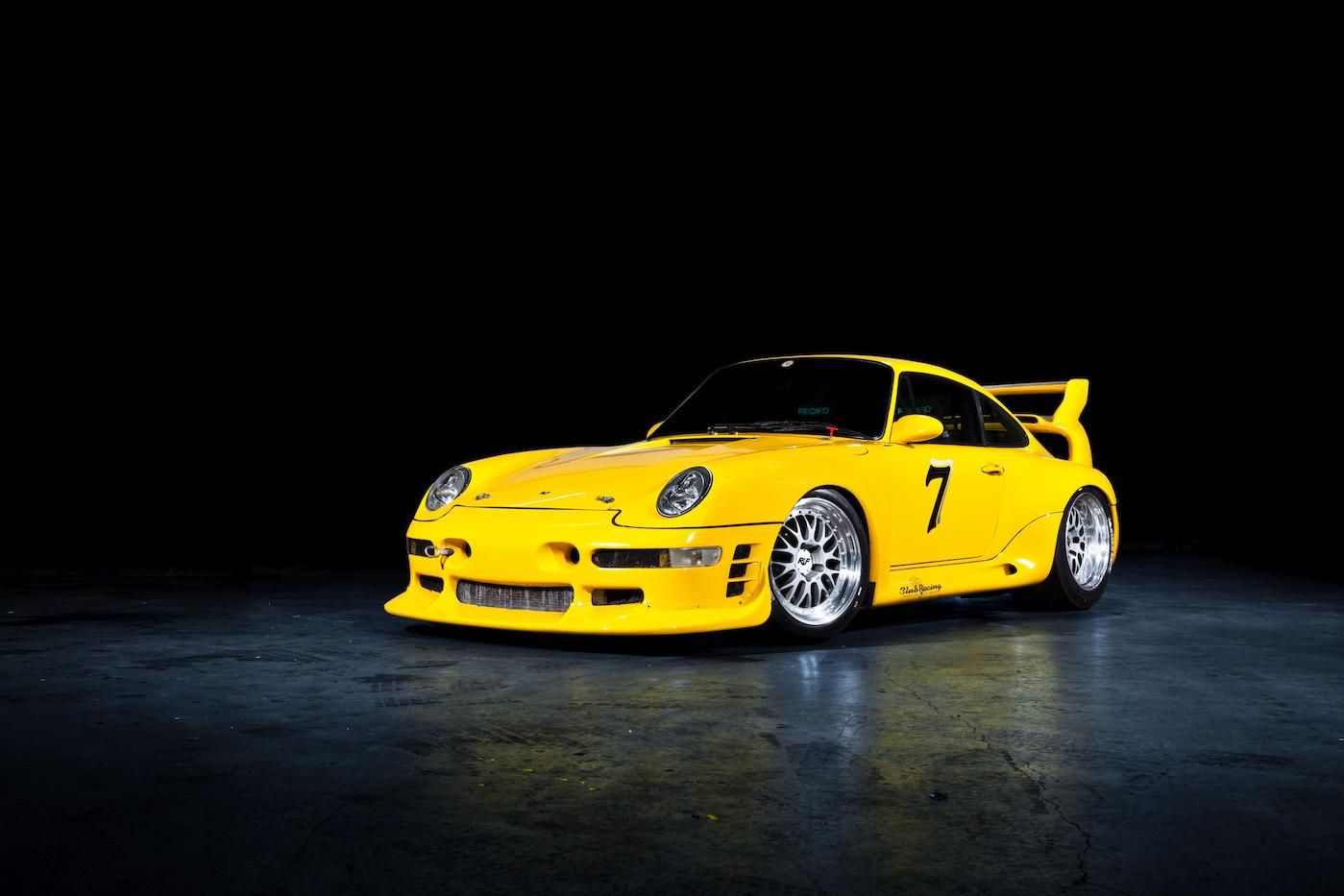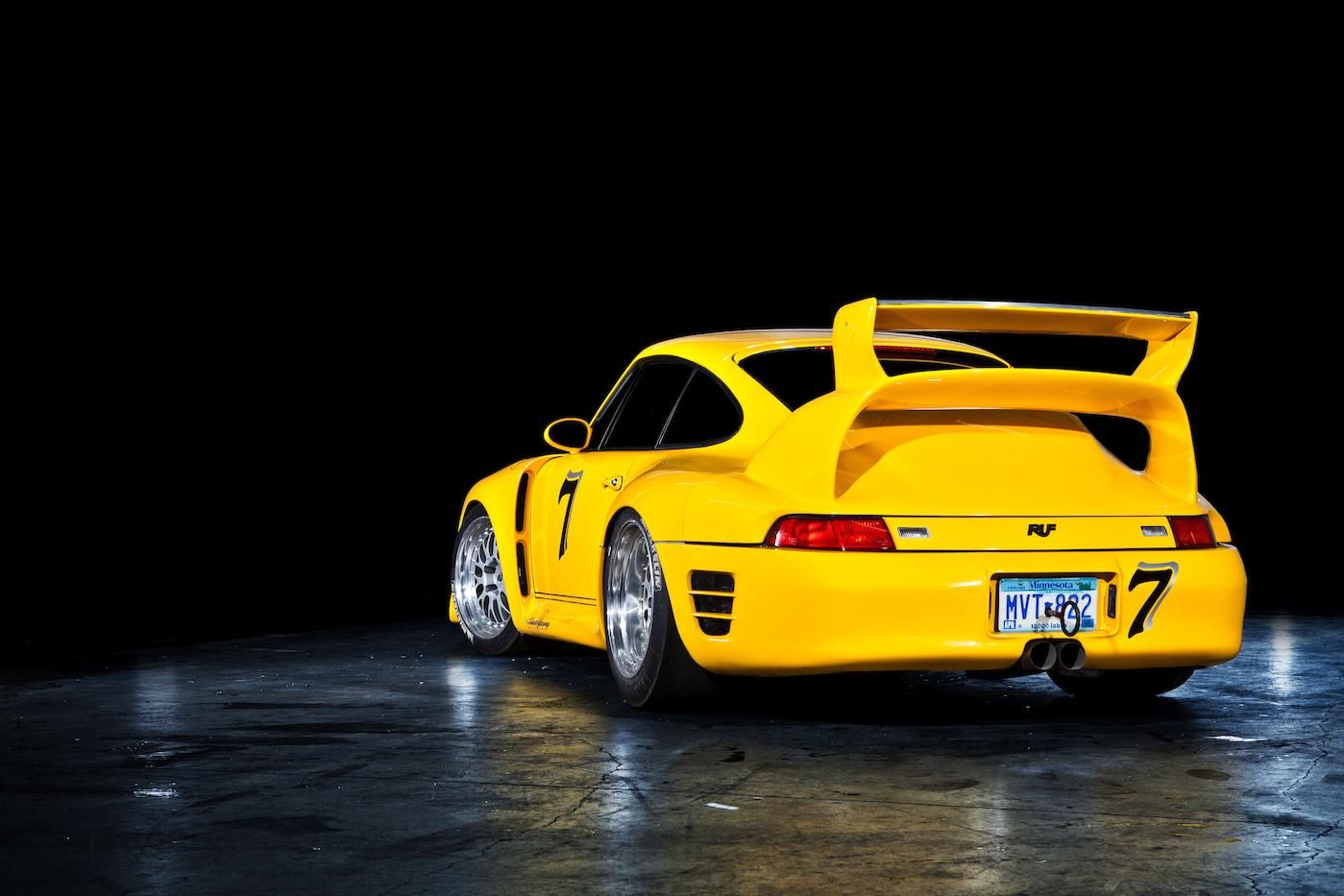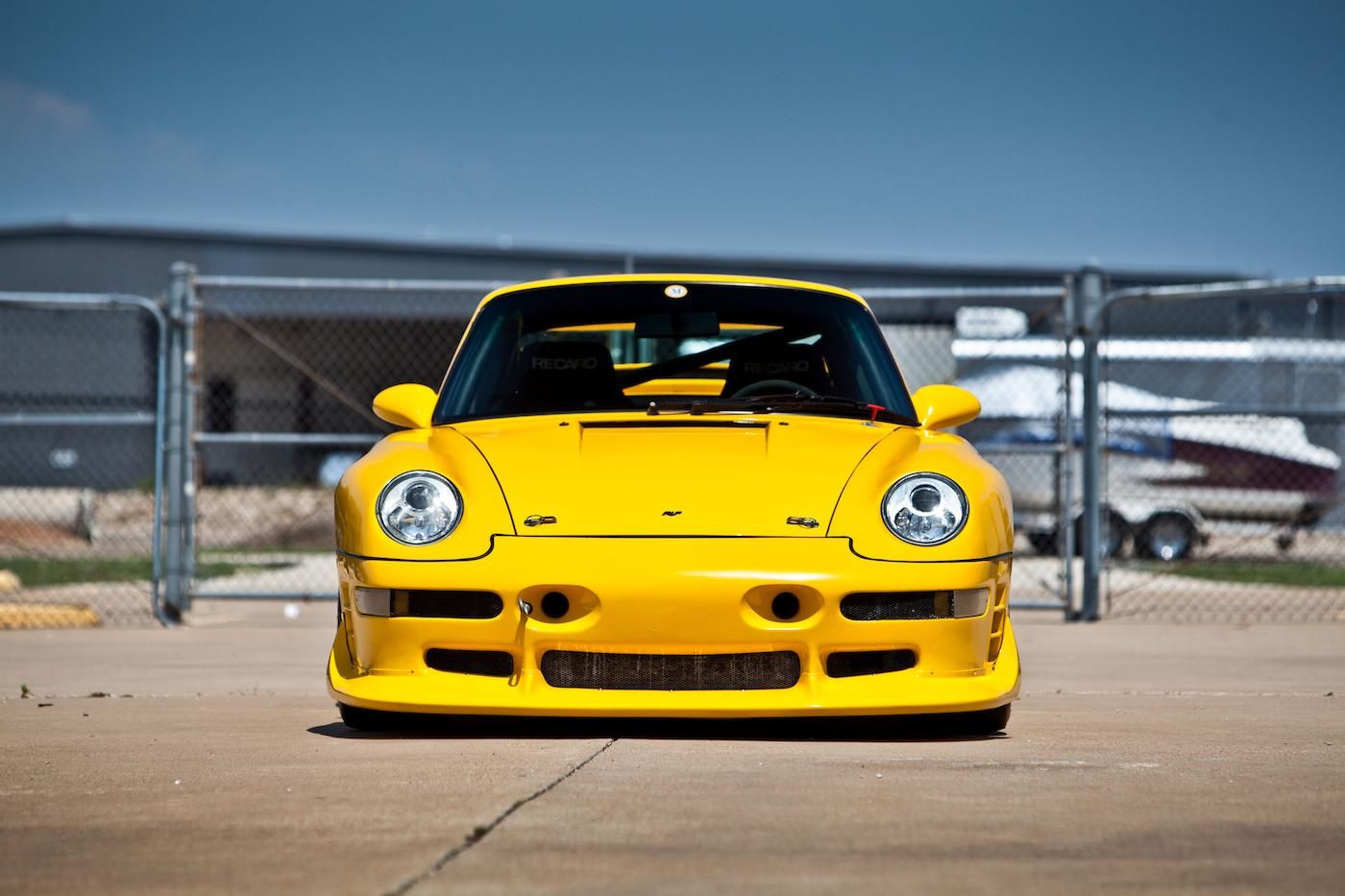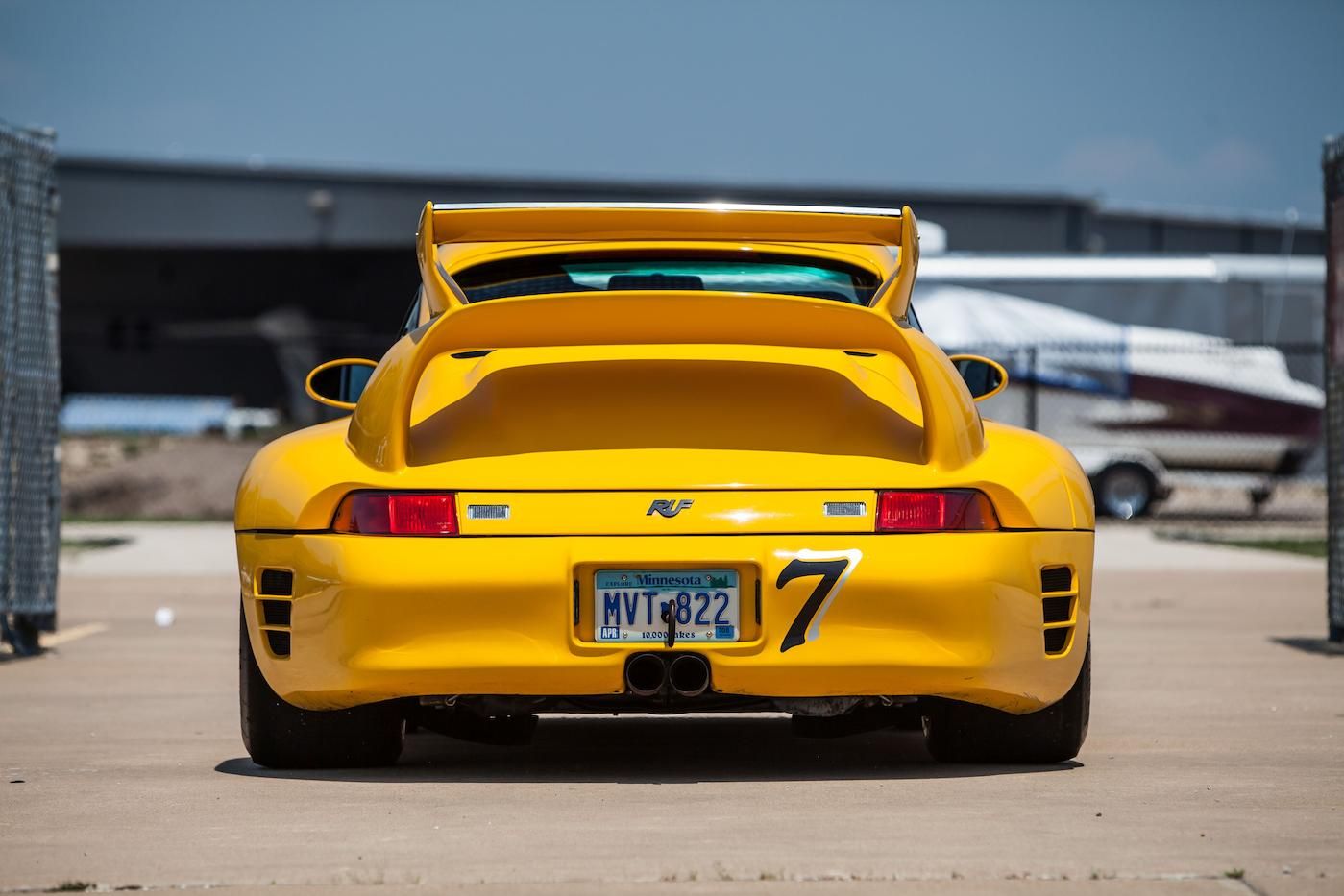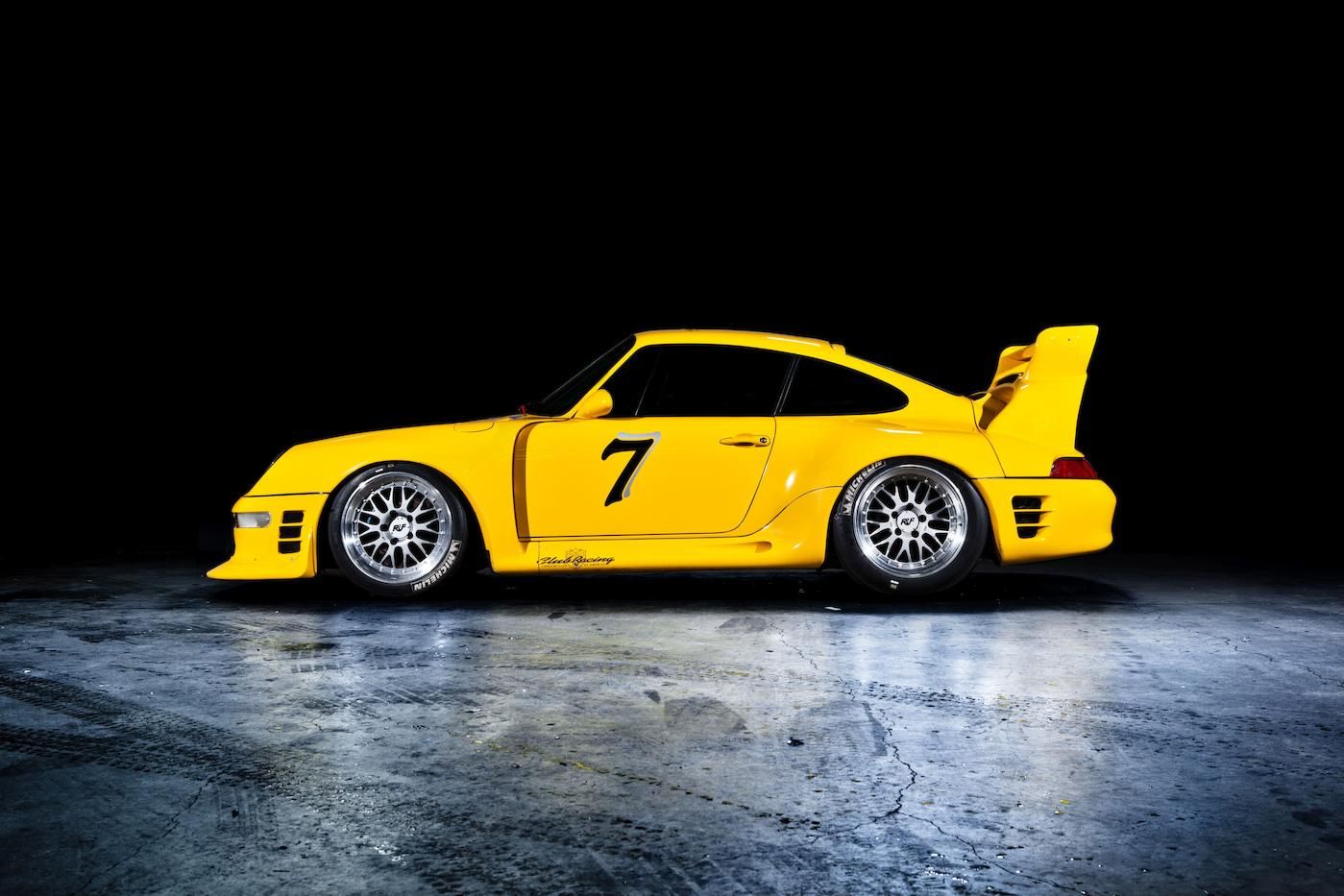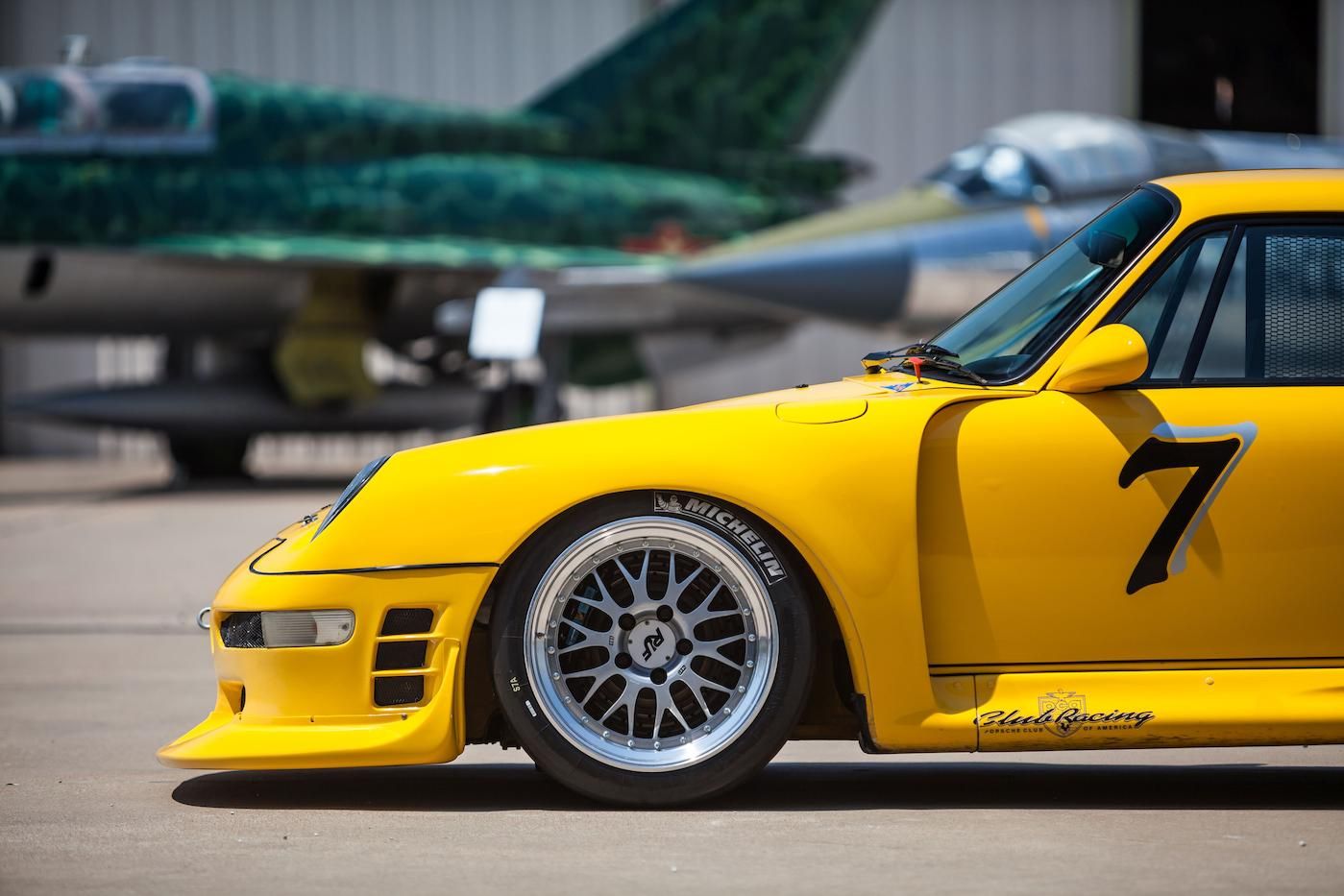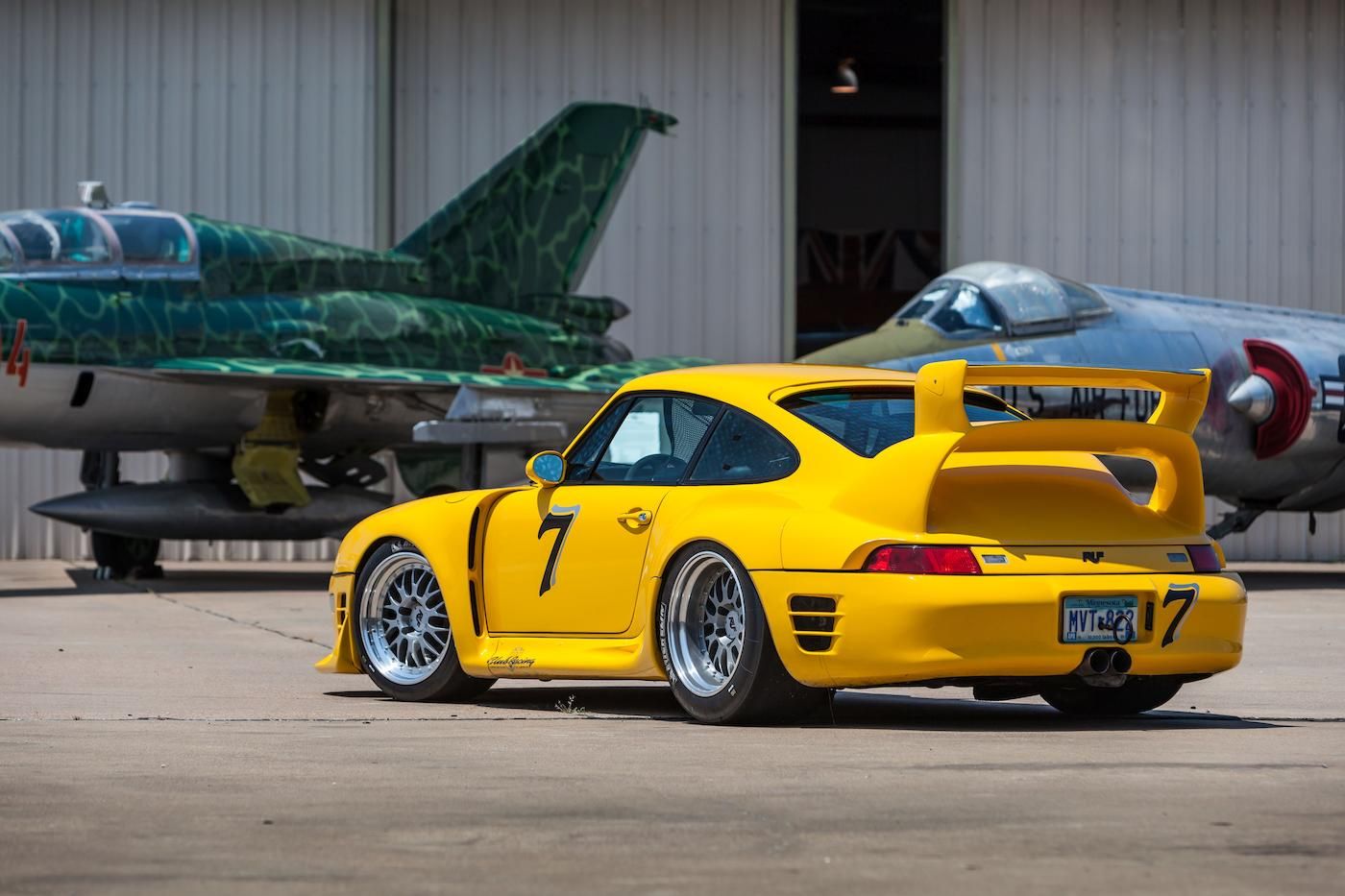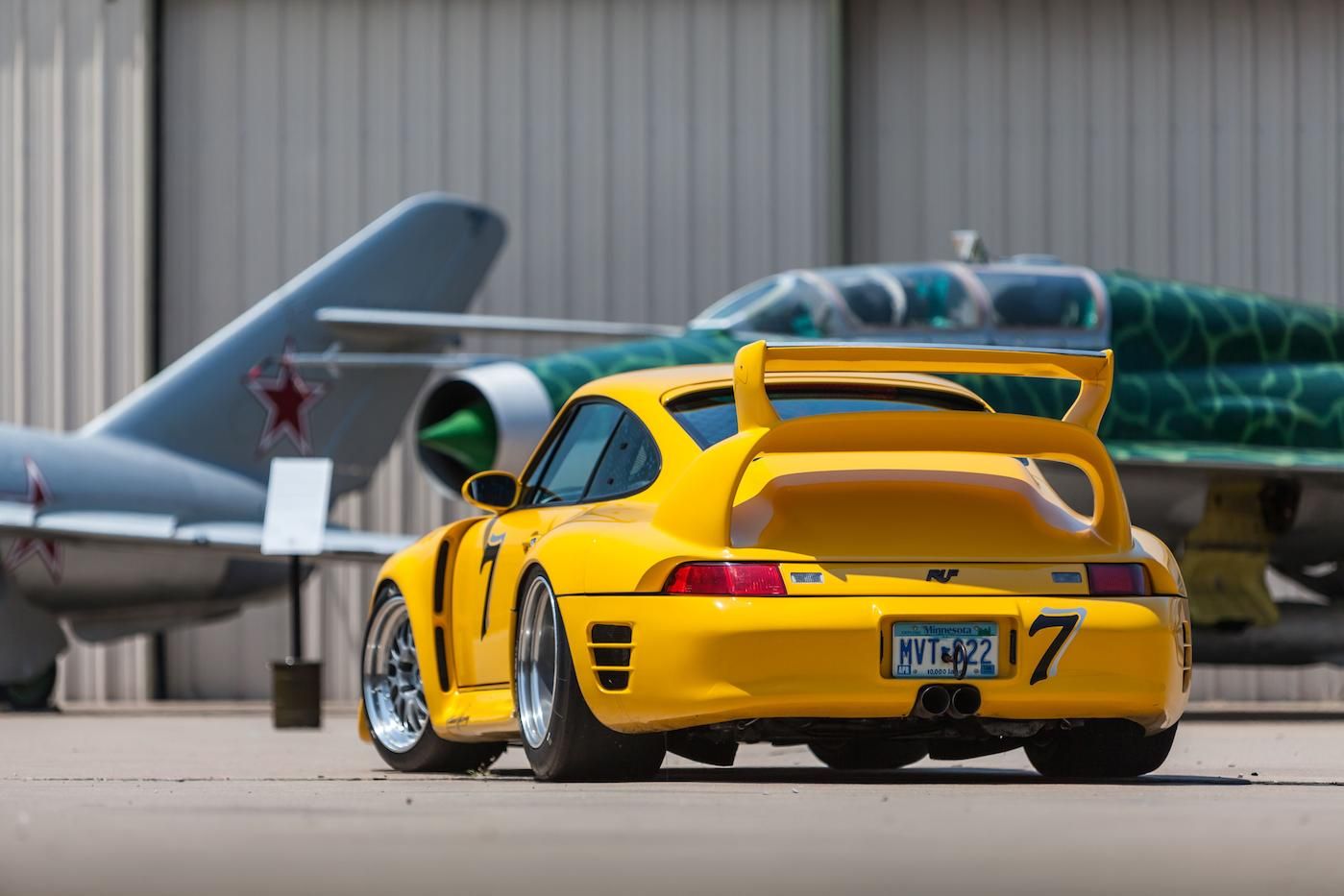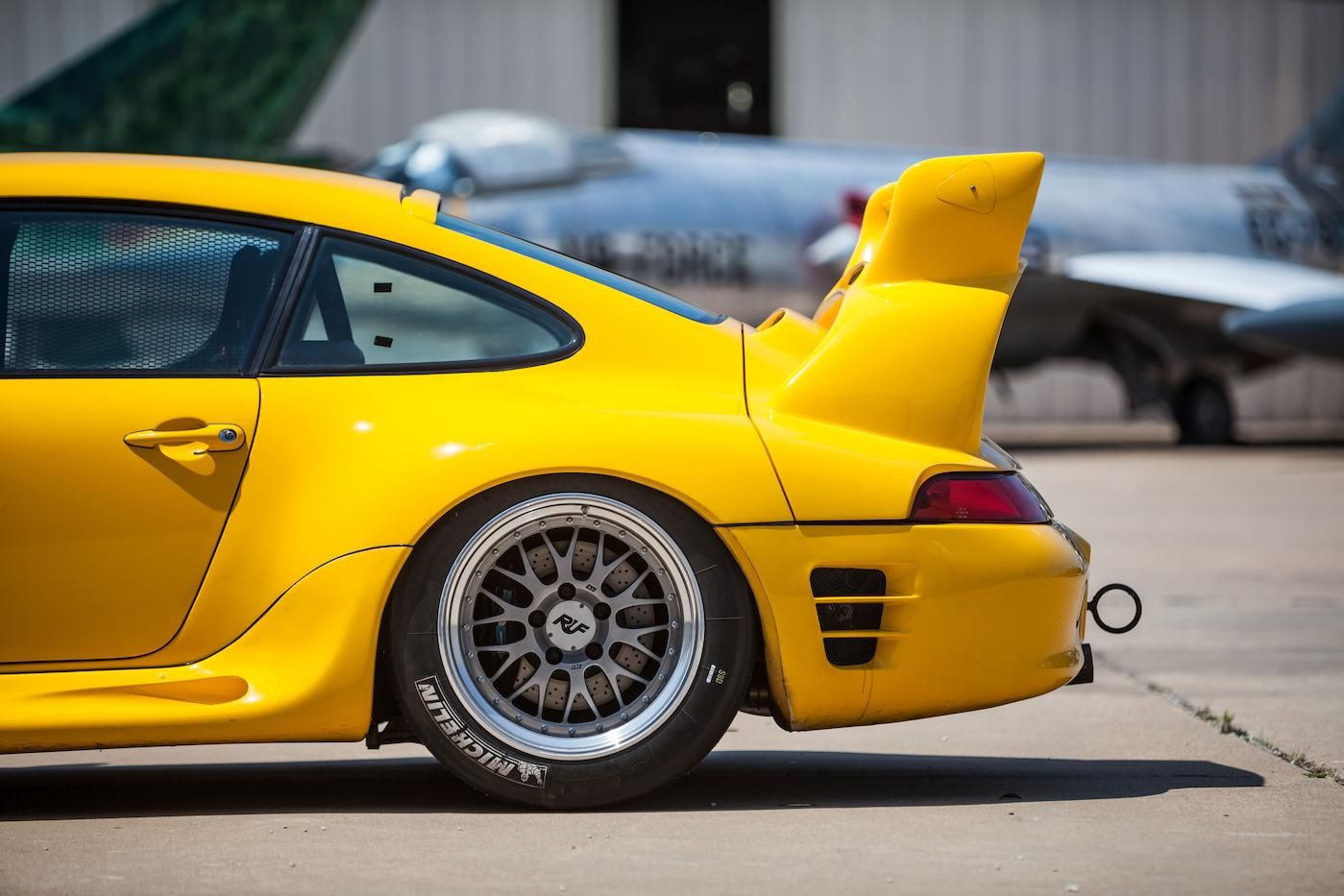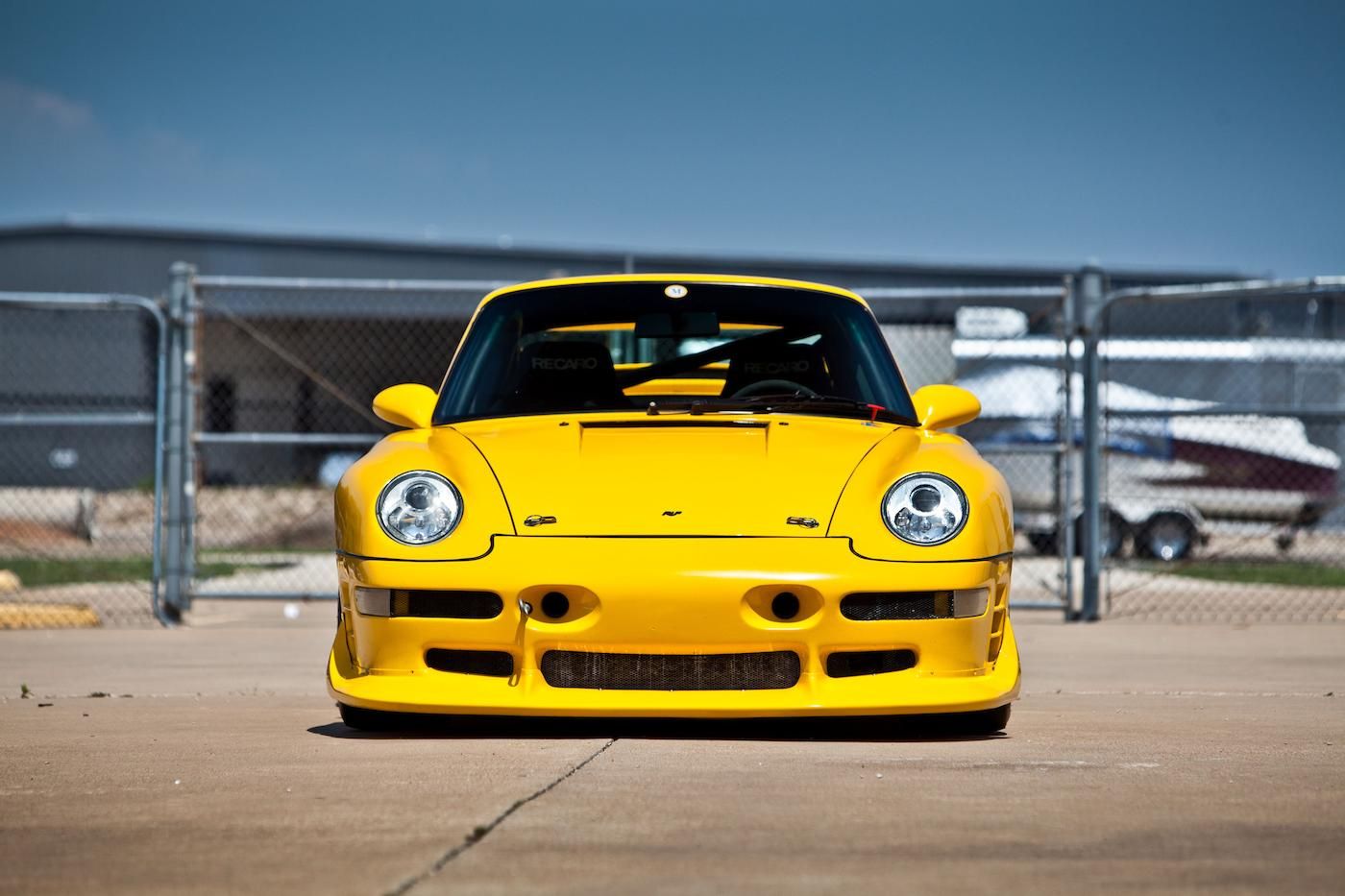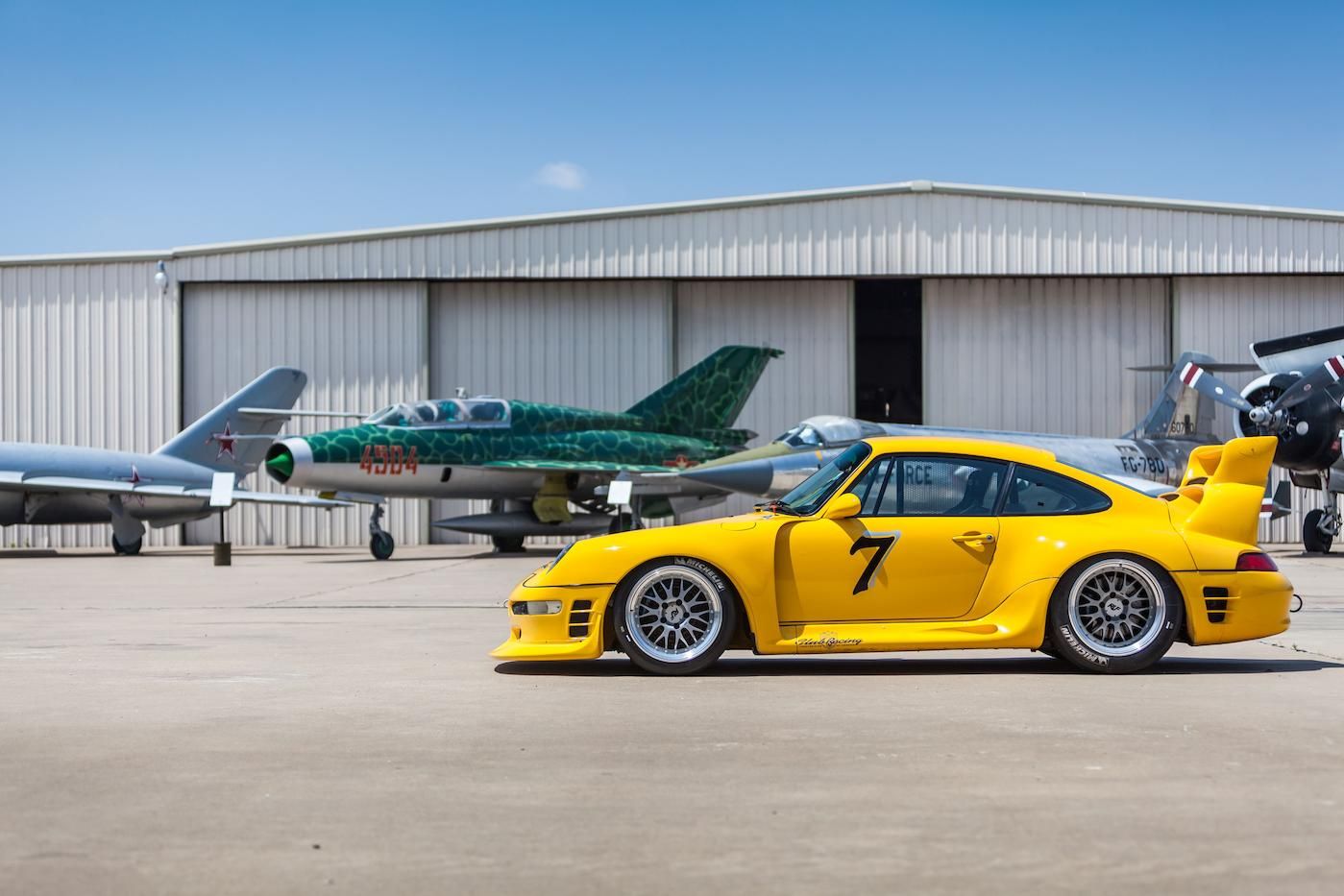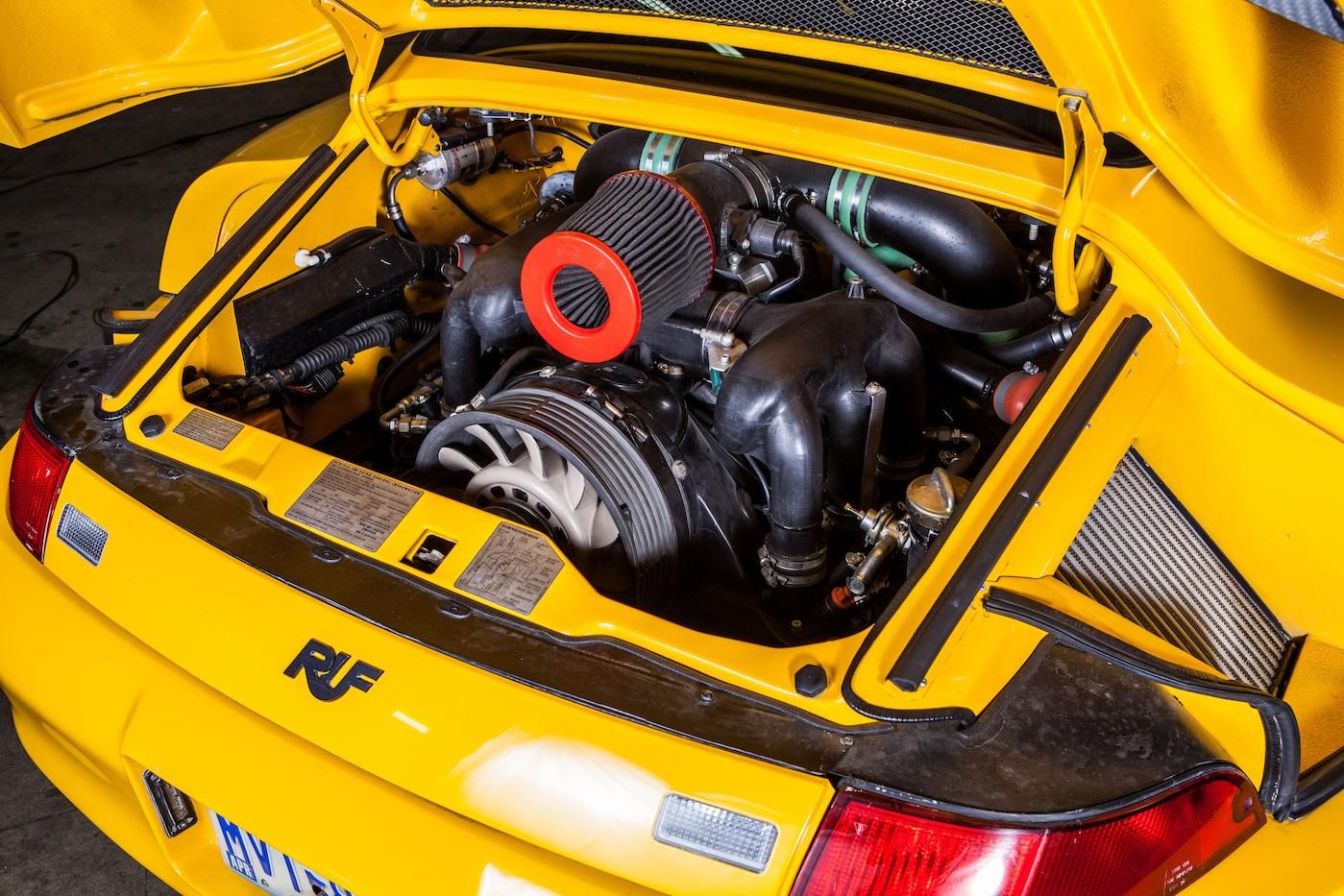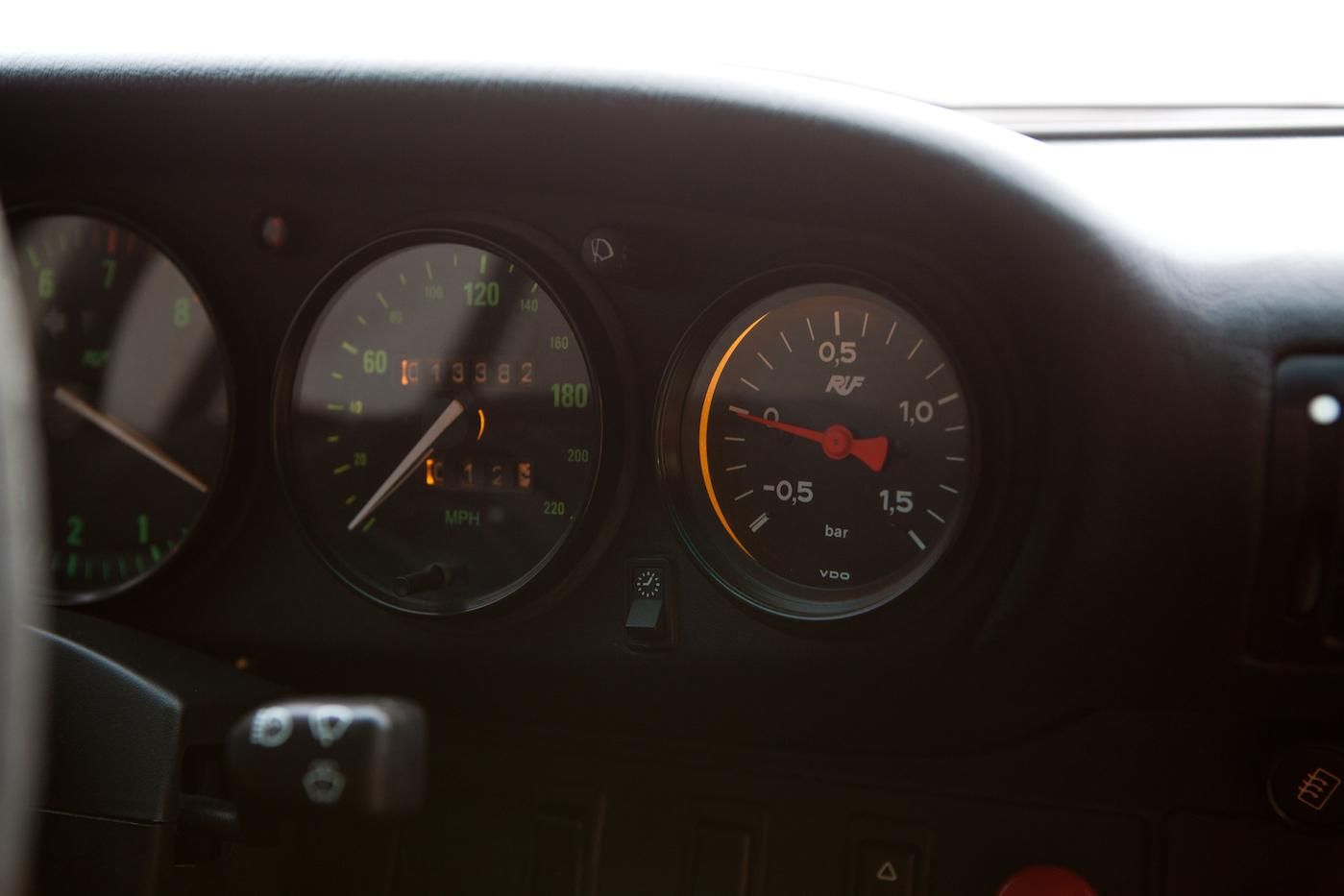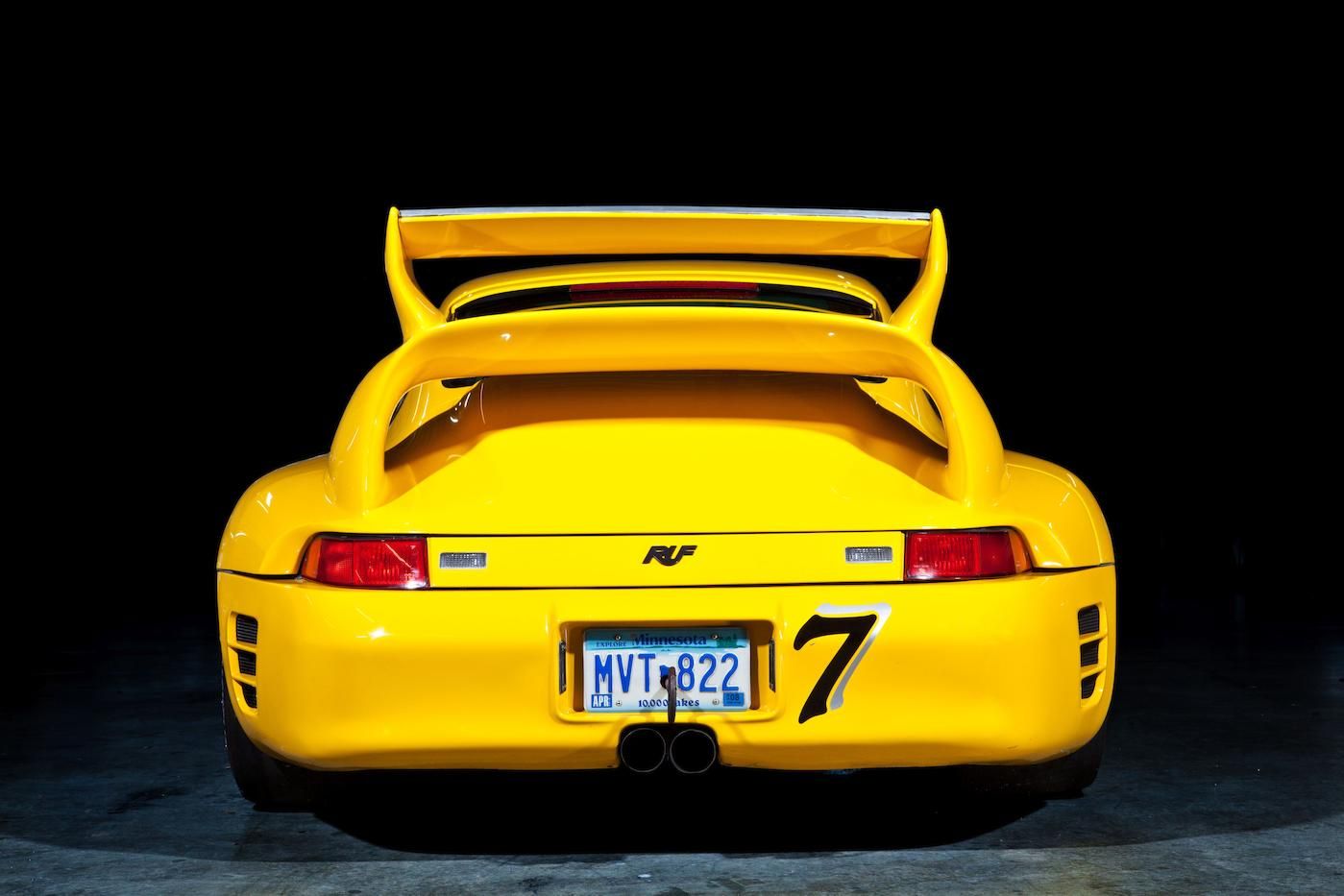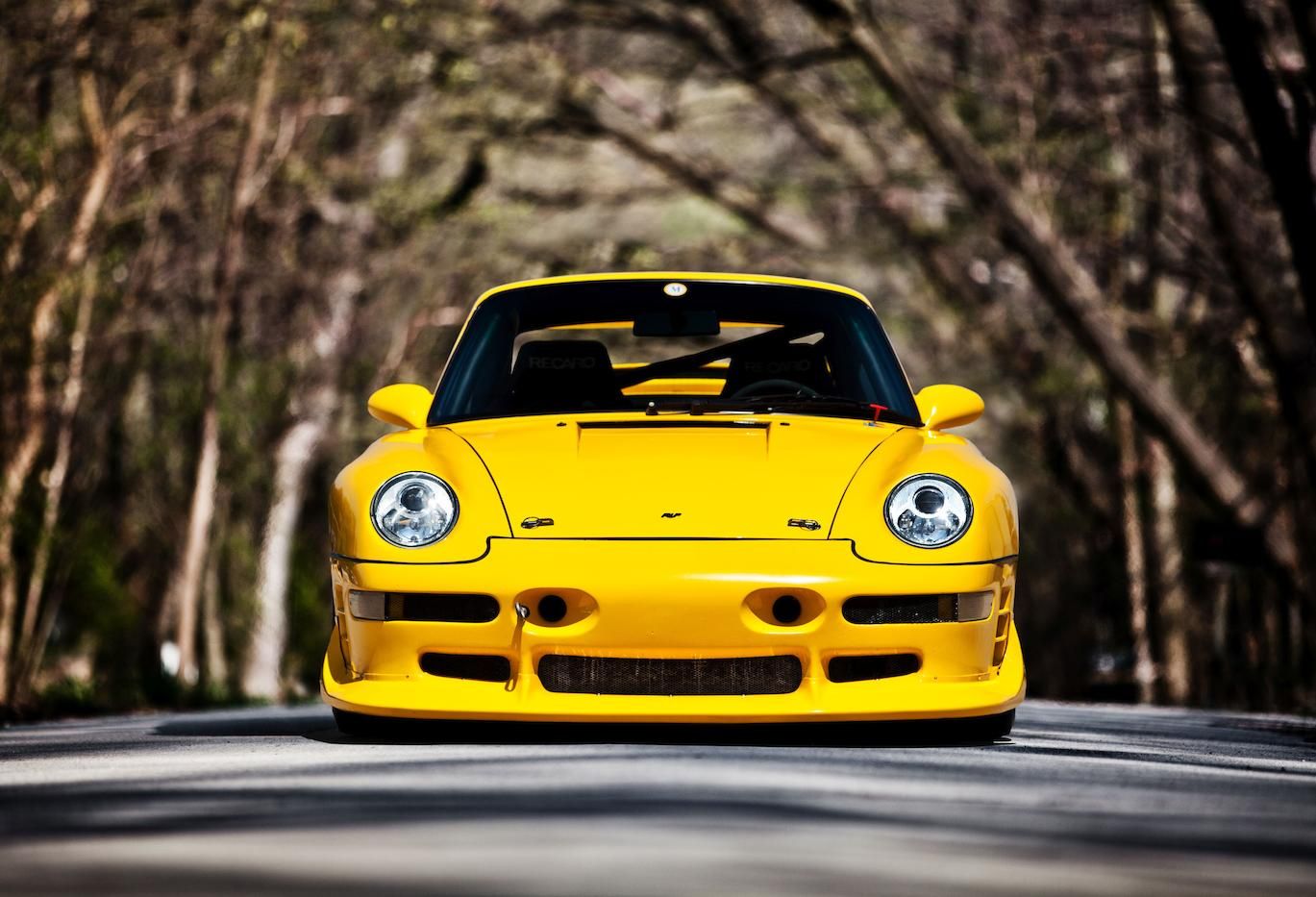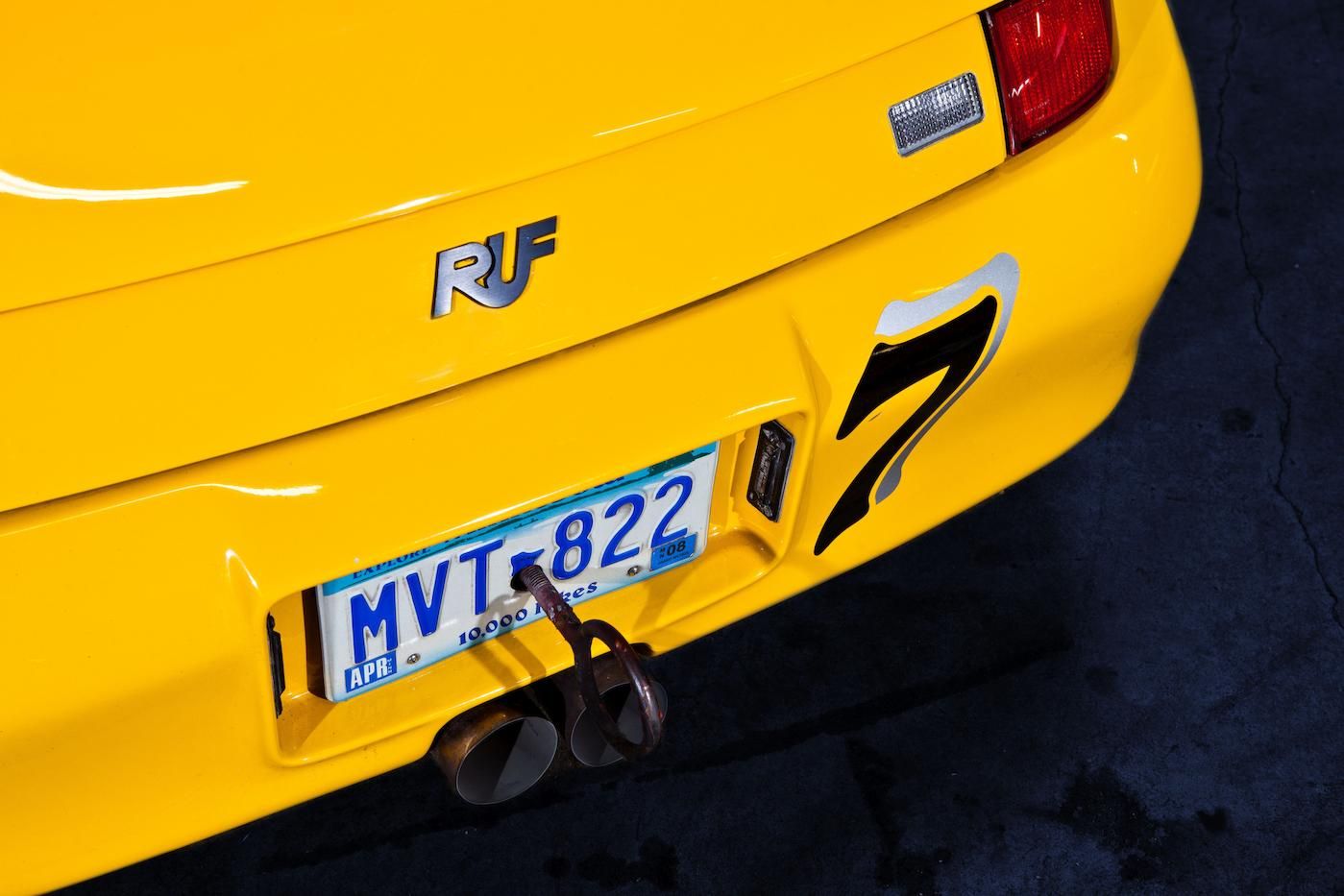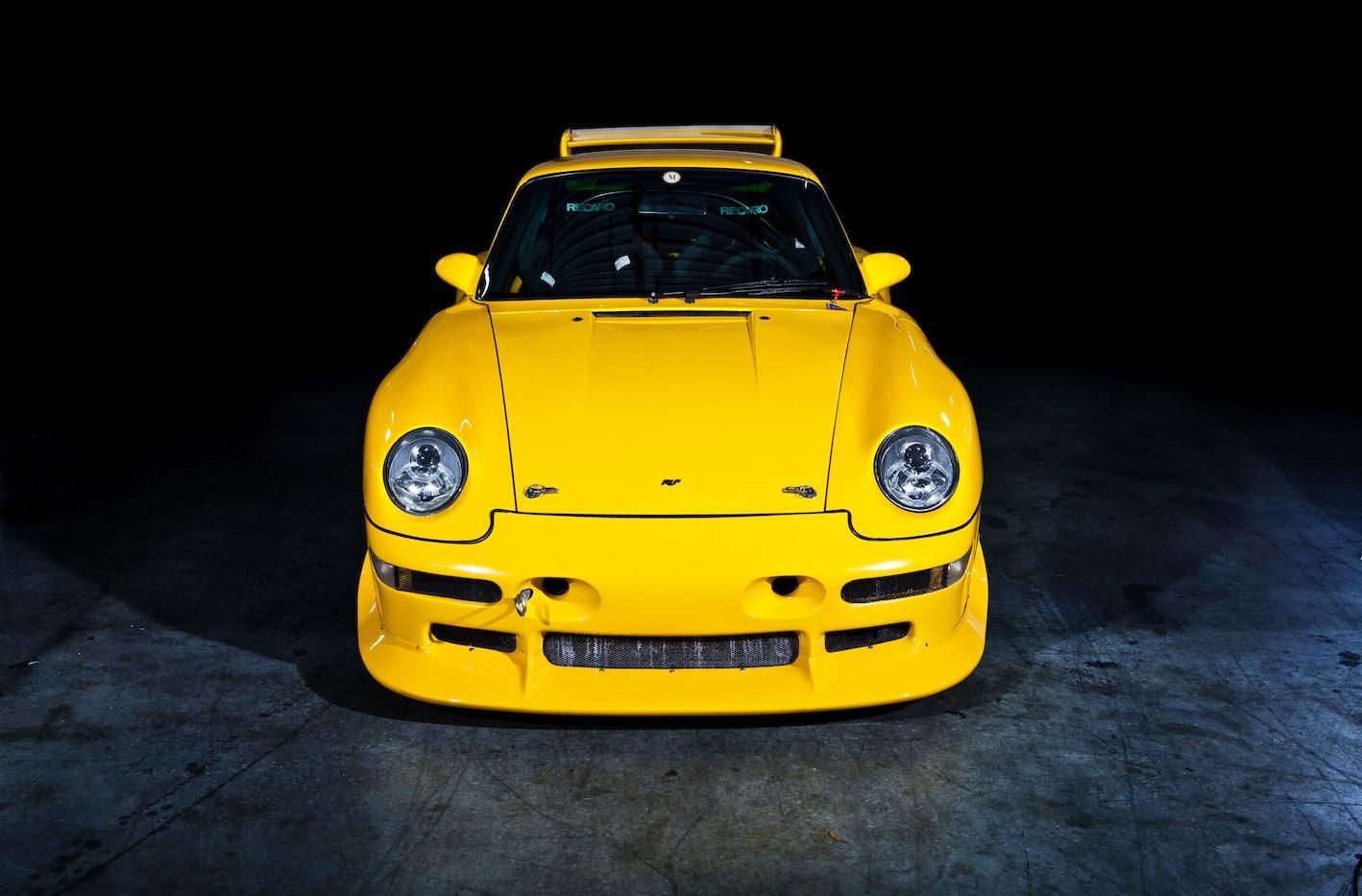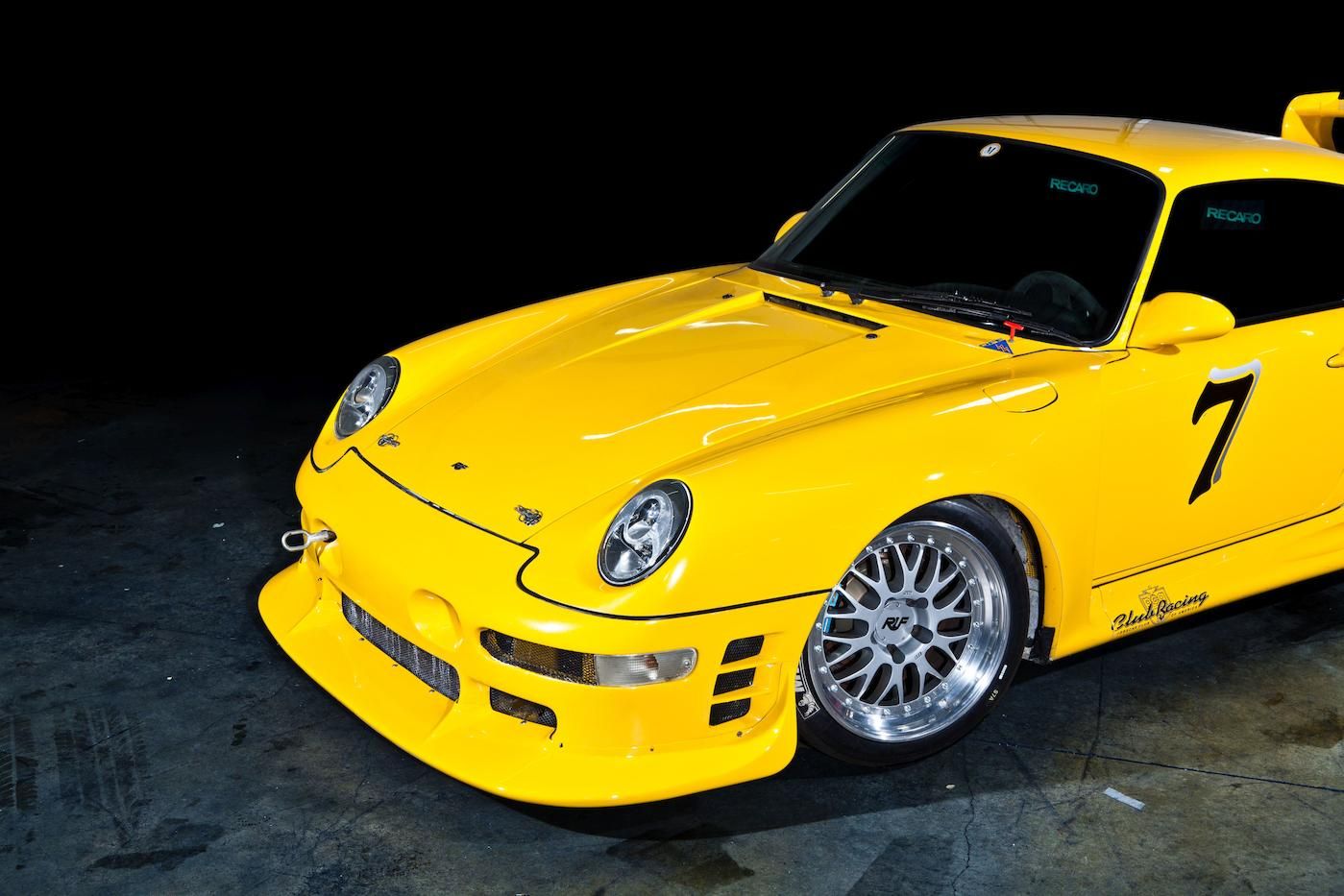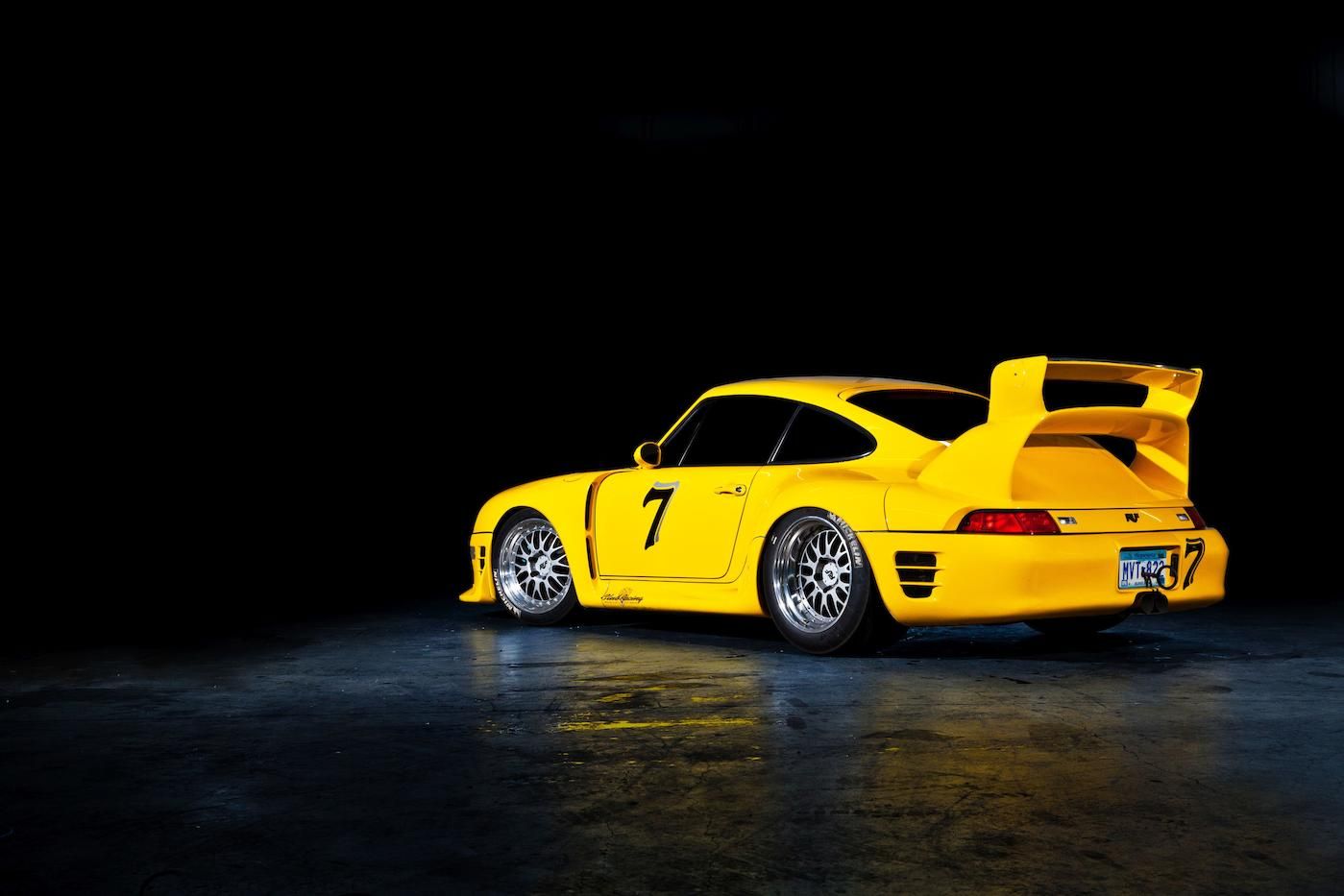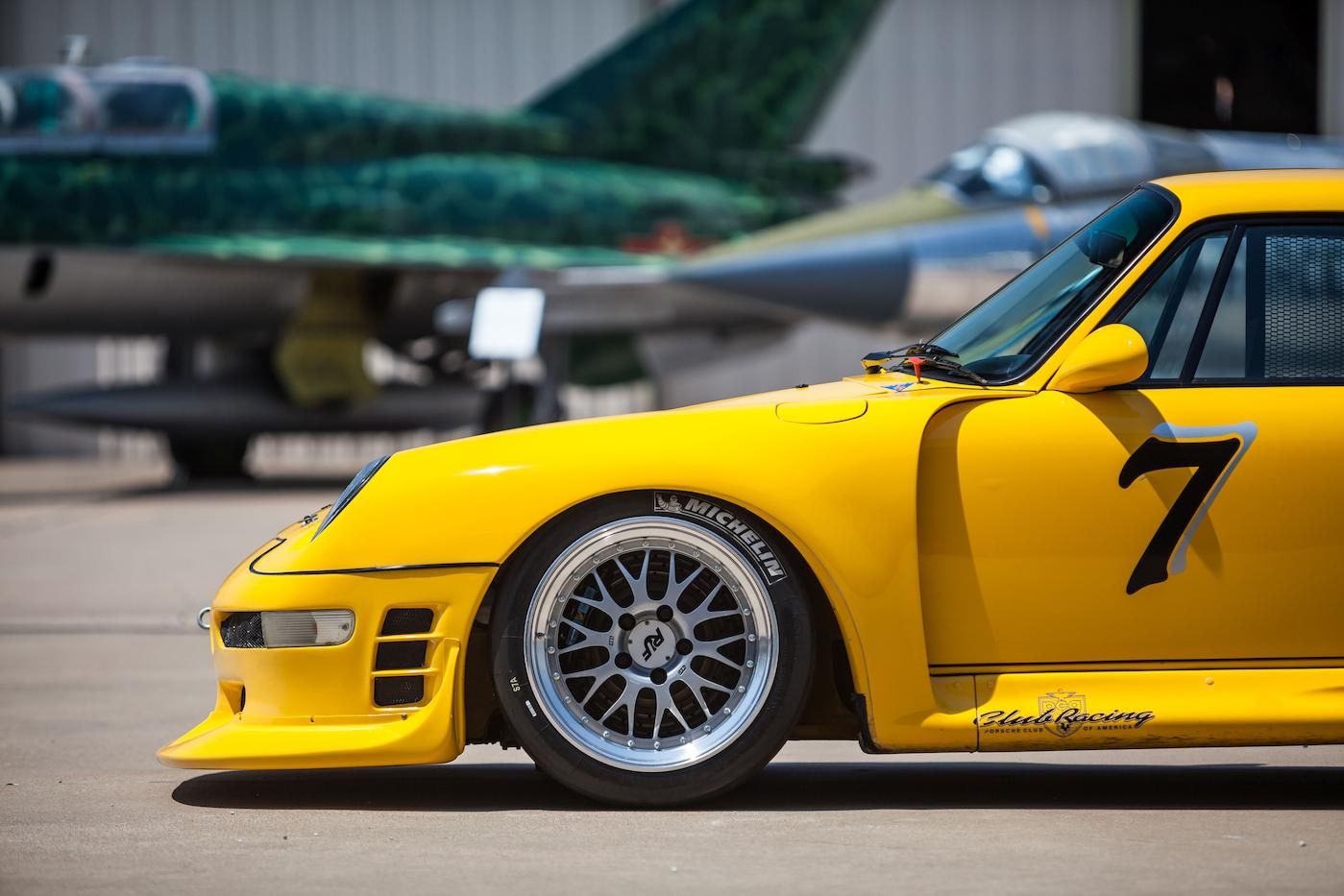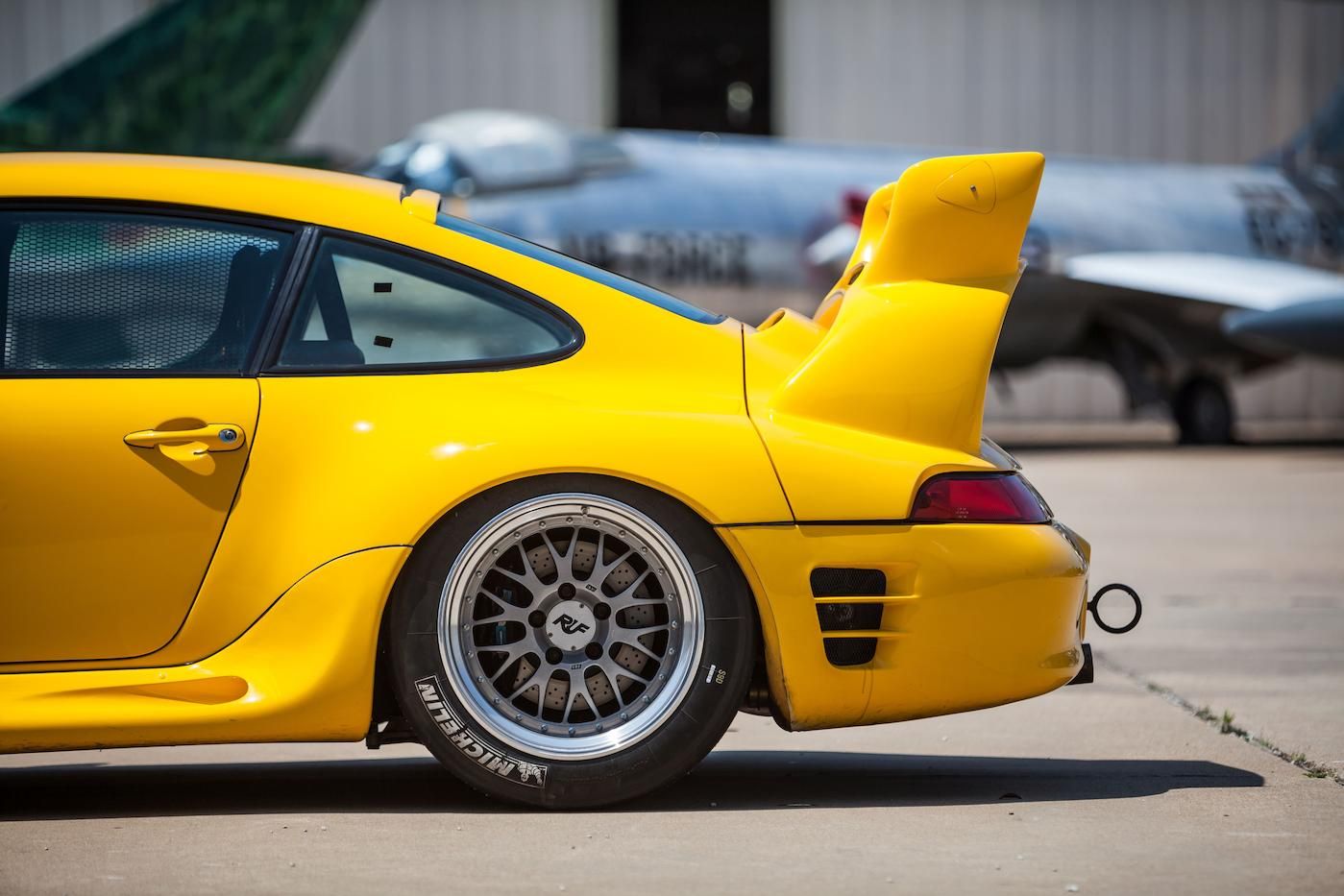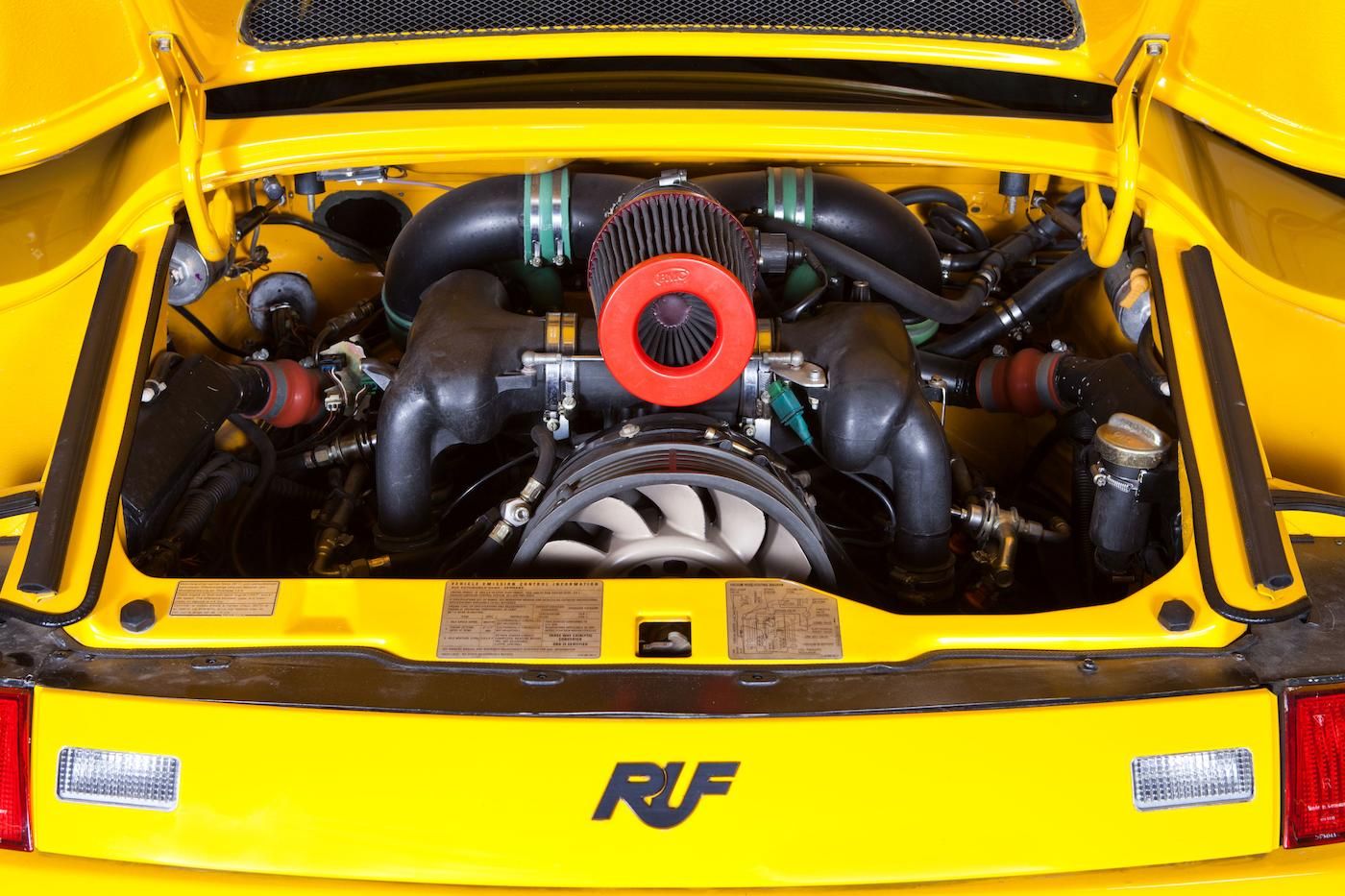RUF builds some of the fastest modified Porsches in the world, cars altered so much that they are barely Porsches when the process reaches the end and the car is ready for delivery. Such a car is the CTR2, the replacement of the Yellowbird, a 993-based monster that could reach 215 mph in 1995, beating anything but the McLaren F1.
If you're asked to name a few really fast cars of the '90s images of the Lamborghini Diablo, the Bugatti EB110, or the Jaguar XJ220 would probably spring in your mind. Well, how many of you would think of a modified Porsche that could beat anything that Zuffenhausen had to offer, even the ludicrous race-bred 911 GT1? Yes, it's the product of a tuner, but the cars built by Alois Ruf Jr., and his men have always been impeccably well-built. They also have an enviable record of humiliating established supercars over the years. The CTR2 is the bridge between the pure Nurburgring-slashing CTR and the mid-engined CTR3 that takes the ideas of the Carrera GT to another level.
1997 RUF Porsche CTR2
- Make: Array
- Model: 1997 RUF Porsche CTR2
- Segment: Array
- [do not use] Vehicle Model: Array
1997 RUF Porsche CTR2 Exterior
By the early '90s, RUF was already an established Porsche tuner. It was actually quite famous thanks to the tape of a yellow CTR drifting effortlessly along the northern loop of the Nurburgring circuit, commonly referred to as the Nordschleife. That car, nicknamed 'Yellowbird' by the editors of Road & Track magazine, looked almost like a standard 911 G on the outside - at least to those not in the know - but could blow an F40 out of the water in no time.
So, with credibility and respect on its side, RUF's engineers set about to create the replacement of the CTR, dubbed 'CTR2'. Again, the CTR designation was an abbreviation of 'Group C Turbo Ruf' as the 3.6-liter boxer unit had some parts transplanted from the Porsche 962 Le Mans-winning Group C prototype.
The base for the CTR2 was Porsche's latest Turbo model of the 993 generation that debuted in 1994. This version, as designed by Tony Hatter, featured a narrow body that was picked over a 993 GT2 because of aerodynamics. The door sills were shrouded, and even the rain gutters were deleted to improve the flow of air across the body.
The CTR2's face might seem as a bit docile when compared to other cars that can exceed 210 mph. The classic twin round headlights are there punctuated by the transparent indicators placed just below. There's one horizontal air vent incorporated in the front trunk lid meant to feed air into the cabin. The bumper itself is what's new at the front compared to a standard 993 Turbo. For starters, the bumper extends lower, and it features three, much bigger, air inlets.
The smaller air grated air vents in the bottom corners of the bumper that can be spotted on the stock model are gone.
1997 RUF Porsche CTR2 Dimensions
|
Wheelbase |
89.4 inches |
|
Length |
169 inches |
|
Width |
68.3 inches |
|
Height |
51 inches |
1997 RUF Porsche CTR2 Interior
The interior of the CTR2 is quite simple, as you’d expect from a car produced in the ‘90s. You don’t get any semblance of an infotainment system and, while you could have a radio and air conditioning, RUFs focus was always on the way the car drives. As such, you get an uncomplicated three-spoke steering wheel, three pedals down below and a stick that controls the 6-speed gearbox.
Leather is everywhere in this car, and each owner could option the colors and other details such as the stitching to their liking. You get bigger "Konig" bucket seats that hug you better and a hidden full-blown roll cage. There are a few knobs above the radio control unit, and that’s about it. The Sport version lacks even more creature comforts.
1997 RUF Porsche CTR2 Drivetrain
First, a little something on the 993 Turbo. Launched in 1995, the 993 Turbo was the final air-cooled Turbo model from Porsche and, also, the first to come with two turbochargers – one for every cylinder bank. It was also the first to be offered in an all-wheel-drive configuration. Likewise, RUF also offered the CTR2 with AWD although this added weight.
|
The suspension, which features coilovers, is also custom made. The stock 993 Turbo has a multi-link rear suspension setup. It’s worth noting that the CTR2 had a limited-slip differential and that RUF offered the model with carbon fiber brakes, “for reliable cold operation” according to the manufacturer from Pfaffenahusen. The brakes, carbon or steel, were big, with four-piston calipers and were sourced 816211 |
center> |
RUF proved that the CTR2 is an immensely capable machine by modifying the first two Sport prototypes for use in racing. These two cars competed in the 1997 Pikes Peak Hillclimb and one of them, that will soon be https://www.topspeed.com/cars/car-news/a-1997-ruf-porsche-ctr2-with-pikes-peak-history-is-expected-to-sell-for-15-million-arfor gr.htmlabs at an upcoming Bonhams auction, finished second overall in the legendary event that year before claiming a sleuth of overall and class wins in hill climbs and circuit events in the late ‘90s.
The Jaguar XJ220, for instance, with its mid-mounted twin-turbocharged 3.5-liter V-6 with an aluminum cylinder block and aluminum cylinder heads with steel connecting rods and crankshaft, developed 540 horsepower at 7,200 rpm and 475 pound-feet of torque at 4,500 rpm. That’s 20 horsepower more than the CTR2, but the XJ220 weighed some 200 pounds more than the RUF which meant it was marginally slower to 62 mph and had a lower top speed of ‘just’ 212 mph. Without its catalytic converters and with a higher rev limit, an XJ220 driven by Martin Brundle reached 217 mph at Nardo, but those modifications meant the car was no longer road legal. In any case, the XJ220 was a heavy car even with the V-6 in place, outweighing the 444 horsepower Porsche 959 by 40 pounds and the F40 and F50 by over 200.
Talking about the F50, Ferrari’s replacement for the F40 was also slower than the CTR2. The 4.7-liter naturally-aspirated V-12 surely sounded better, but it was only able to produce 512 horsepower at 8,000 rpm and 347 pound-feet of torque at 6,500 rpm. Its handling wasn’t on par with the F40, and it was almost slower to 62 mph as it needed about 4 seconds to get there from a standstill. Top speed was claimed to be 202 mph although individual tests could yield nothing above 194 mph.
Finally, there’s the Bugatti EB110. With its over-complicated quad-turbocharger setup, the only ‘Italian’ Bugatti was good for 552 horsepower in non-SS specifications and reached 62 mph in just 3.2 seconds. This is 0.4 seconds faster than the CTR2, despite the fact that the EB110 was almost 600 pounds heavier. It could be because the EB110 had AWD.
The fastest Porsche built by Porsche at that time wasn’t by any means a ‘standard’ model. That’s because the only 911 that could exceed 190 mph in the late ‘90s was the 911 GT1 in street legal guise. It had 536 horsepower and 443 pound-feet of torque, a bit down on power compared to the racing version due to European emissions laws that forced Porsche to de-tune the engine and modify the exhaust system. As tested by Auto Motor Und Sport, the 911 GT1 reached 62 mph from naught in just 3.9 seconds. That’s 0.3 seconds slower than the CTR2 in spite of the GT1’s added aero and a curb weight of just 2,535 pounds.
In other words, the only four-wheeled contraption that was road legal in the late ‘90s and wasn’t a McLaren F1 and was also faster than the RUF CTR2 was the Schuppan Porsche 962CR. This mid-engined mutant was, basically, a road-going version of the Porsche 962. It had a slightly bigger engine (3.3-liters from the original 2.65-liters), and Schuppan said the car could reach in excess of 220 mph, but nobody went that fast with it ever, so nobody really knows.
As a footnote, Porsche’s fastest 911 Turbo in 2019, the S version, boasts a top speed of 205 mph. That’s how amazingly fast the little 993-based rocket really is!
1997 RUF Porsche CTR2 Specifications
|
Engine |
3.6-liter, air-cooled, single-camshaft, twin-turbocharged, flat-6 |
|
Compression ratio |
8.0:1 |
|
Output |
520 HP @ 5,800 RPM |
|
Torque |
505 LB-FT @ 4,800 RPM |
|
Top speed of 215 mph |
|
|
0 to 62 mph |
3.2 seconds |
|
Quarter mile |
11.4 seconds with a gate speed of 133 mph |
|
Suspension |
Coilovers with adjustable dampers |
|
Brakes |
Brembo steel (carbon fiber optional) |
|
Weight |
3,040 pounds |
1997 RUF Porsche CTR2 Pricing
The CTR2 was quite expensive back in the ‘90s, costing almost $500,000 in today’s money. However, most of its rivals – the F50, the EB110, and the F1, for example – were all pricier and, nowadays, aren’t as rare as the CTR2 of which no more than 30 examples were built (including the Sport models).
Today, all of those cars that I’ve mentioned are even more expensive. You’ll have to find at least $2.0 million to get your hands on an F50 while an EB110 GT exceeds $1.0 million and approaches $1.6 million in SS guise. The XJ220 seems to be the cheapest of the lot with examples of trading hands for about $650,000 apiece. A CTR2 rarely pops up for sale anywhere in the world and, when it does, prices tend to vary. A dealer had one for sale for $836,000 while Artcurial sold another for over $650,000. Still, that’s less than you’d have to pay for a 2018 Ferrari 812 Superfast that, believe it or not, is slower – just 211 mph top speed.
Final Thoughts
The CTR2 is for the person who wants a CTR but doesn’t have a death wish. It’s a car that could beat supercars from any established brand in the business without looking the part necessarily – apart from that humongous rear wing. It was also as well-built as a Porsche from Stuttgart, although you can’t call a car that can reach 215 mph a ‘daily driver.’
At the end of the day, the main problem with the CTR2 is that those that own one know what they’ve got, and you don’t see them changing ownership all that often. I mean, think of it this way: McLaren built over 64 standard F1s while RUF delivered little over a dozen CTR2s...
Further reading
Read our full review on the 1997 - 1998 Porsche 911 Turbo S (993).
Read our full review on the 1988 Porsche 911 Turbo ’Ruf CTR’
Read our full review on the 2011 RUF CTR 3.


